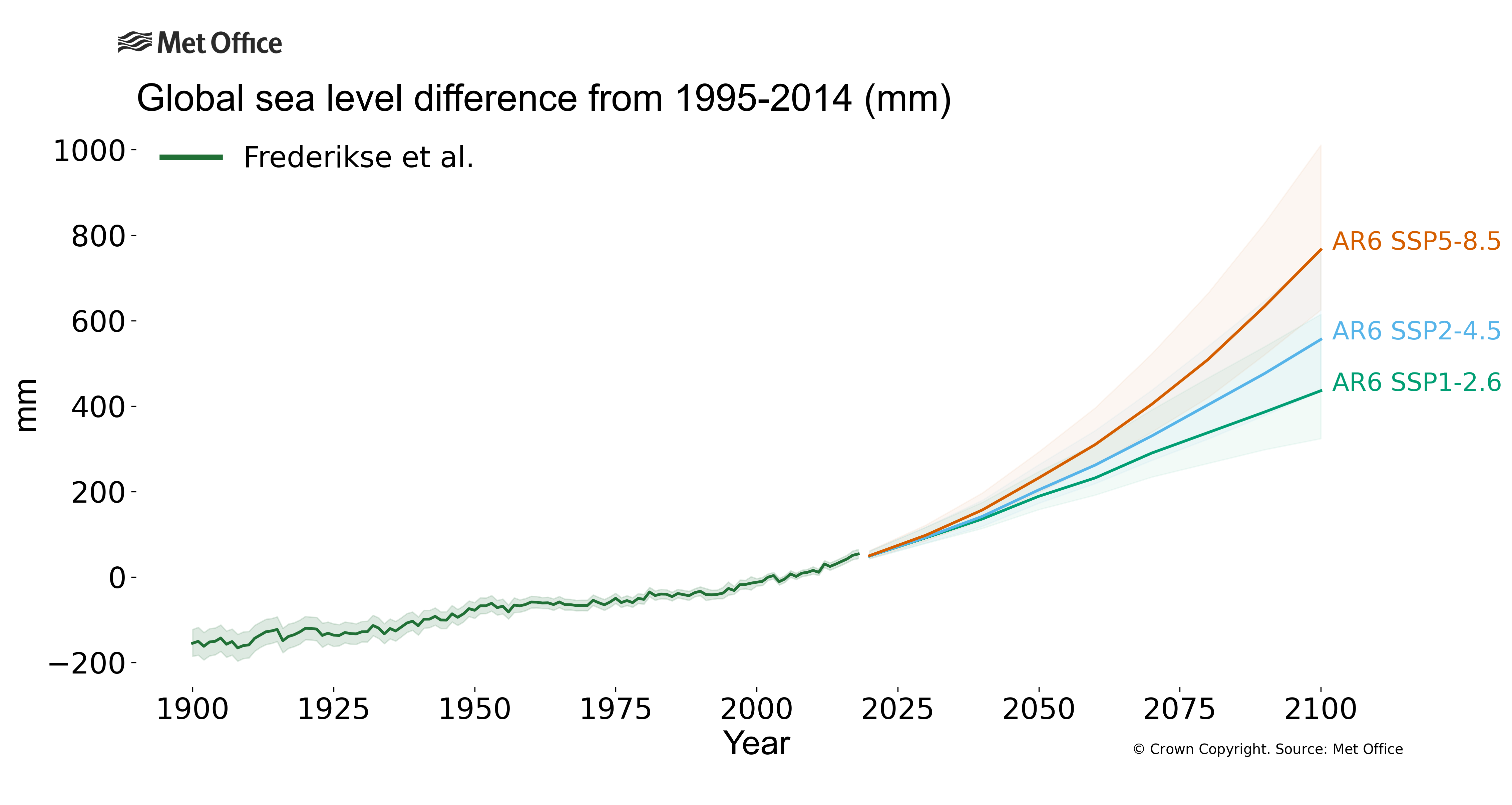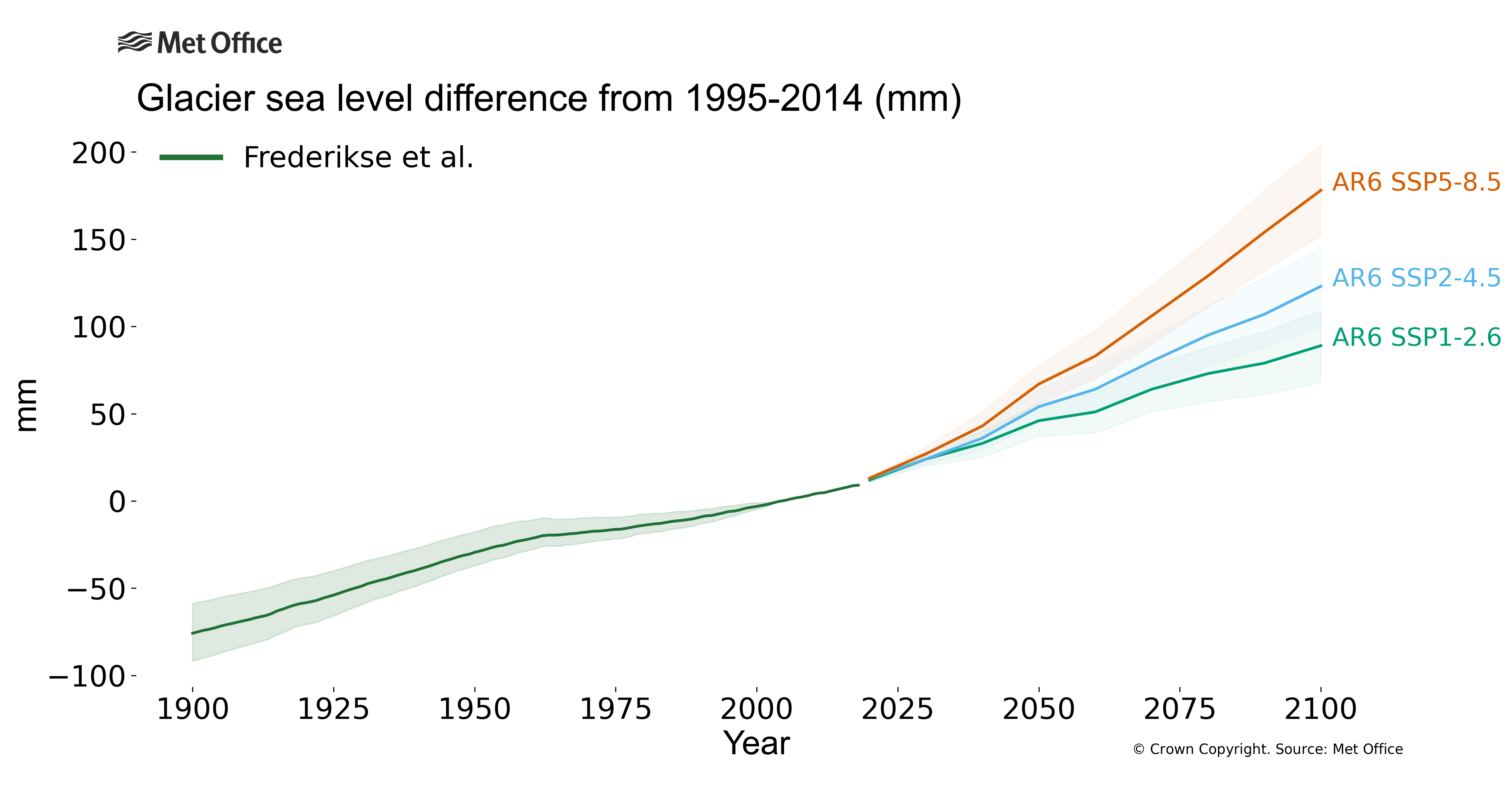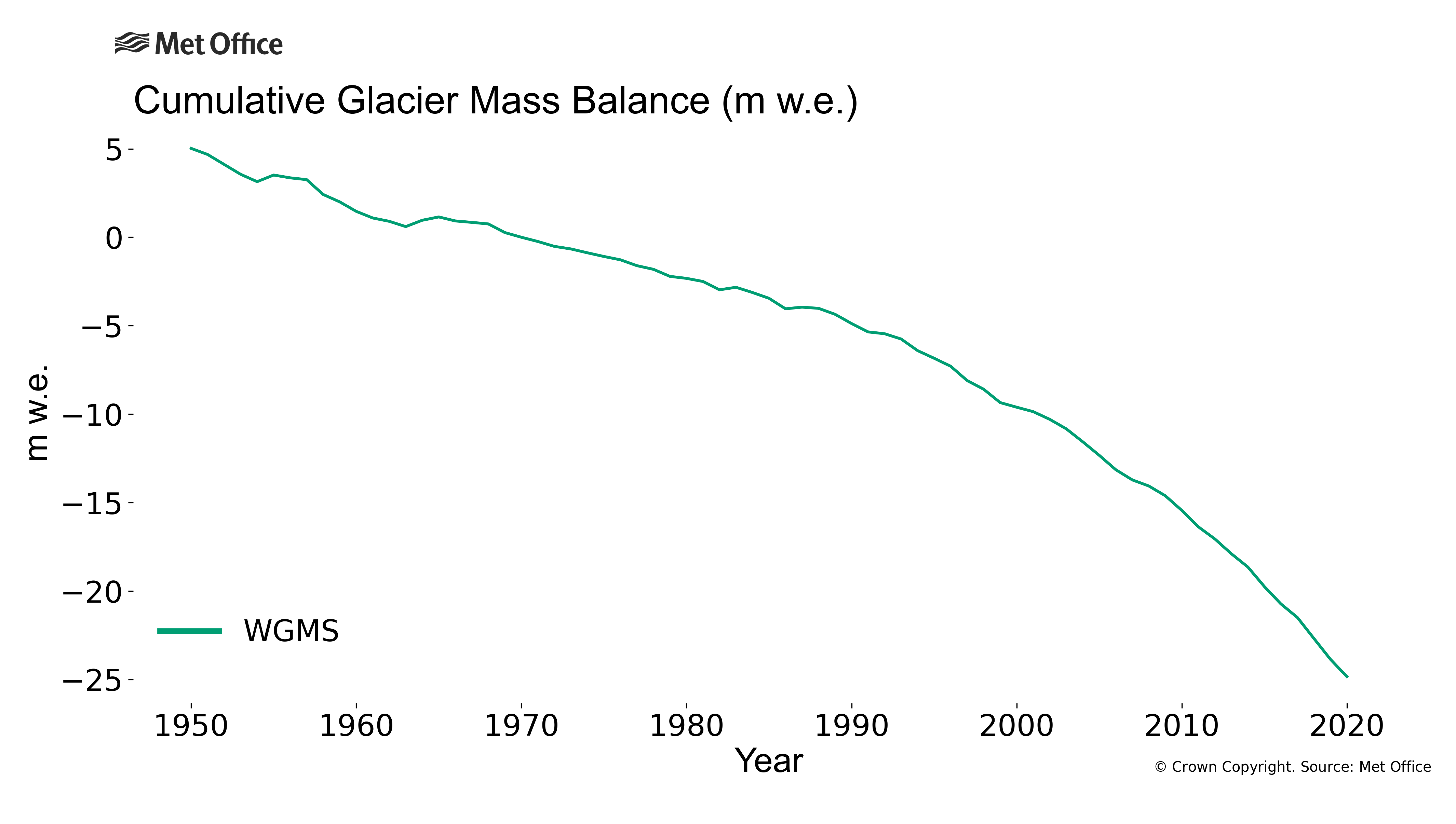Why are glaciers important for sea level?
Melting glaciers were the largest component of sea level rise until the 1970s, at which point thermosteric sea level rise became the dominant component. However, glaciers have still contributed two times more to global average sea level rise than ocean warming.
Glacial melt is also significant for communities that rely on glaciers to feed rivers or basins from which water is extracted for domestic use, and for the potential hazards, such as floods, that melting glaciers could cause for these communities.
How have glaciers affected sea level?
The balance between the accumulation of mass from snow falling on a glacier and ice loss, also known as the mass balance, controls how a glacier changes over time. Glacier mass is decreasing, thus causing sea levels to rise from the ice melt that ends up in the ocean. The rate of ice loss from glaciers was at its highest over the last decade, although there is year to year variability in the amount of ice lost. Longer term records show that glaciers have been in retreat since the 19th century.
Why has glacier mass changed?
Glaciers respond to changes in temperature, the strength of sunlight reaching the glacier through changes in cloud cover and albedo, and precipitation. Rate of flow of glaciers can also be affected by a change in surface gradient. This may occur through downstream changes such as the loss of buttressing ice shelves, changes in basal lubrication due to meltwater, rainfall, or infiltration of sea water. Each glacier is subject to a unique combination of the above-mentioned factors so there is variation in the mass balance between glaciers.
AR6 states that human influence was very likely the main driver of the widespread retreat of glaciers since the 1950s, which is unprecedented in the last 2000 years (medium confidence). The rate of mass loss appears to have increased since the 1990s and over 50% of the total remaining glacier mass could be lost by the end of the 21st century under a higher emissions scenario.
How is glacier mass projected to change in the future?
Sea level rise from melting glaciers is projected to continue for several decades after global temperatures are stabilised. This is because glaciers, like the ocean, are slower to respond to changing temperatures than the atmosphere is. Variations in the projections arise from differences in glacier models as well as differences in the climate change scenarios, but all agree on continued glacial melt.
Looking beyond 2100 projections can be extended and show that glacier mass loss depends on both scenario and warming level. At the top end of scenario projections (high emissions and rapid CO2 doubling) it is not possible to rule out the potential to have lost all glacial mass by 2300, contributing around 300mm to global mean sea level rise. Even with low and then negative CO2 emissions, glacial mass could be completely lost, but the uncertainty in whether this happens or not is much greater than in the high emissions scenario.
How is glacier mass measured?
Glacier contribution to sea level change is taken from Frederikse et al., 2020. This study takes information from multiple sources.
The first source is the combined record from the GRACE and GRACE-FO missions, which observe redistribution of mass over the Earth’s surface by measuring changes in the Earth gravity field. This record started in 2002 and gives a complete overview of the mass loss from glaciers and ice sheets and the subsequent mass gain of the oceans.
The second source is a global glacier model, providing data from 1900 to 2003, that takes information from climate surface observations and glacier observations (including length, elevation and known mass change) to provide annual glacier mass loss estimates ( Marzeion et al., 2015).
The third source provides glacier mass changes since 1961 based on observational data from in situ glacier measurements taken during field campaigns combined with geodetic observations, which look at changes in glacier volume using mapping of glacier surface elevations (from ground, air, and space observations), Zemp et al., 2019.
How are glacier projections made?
Glacier models have been compared in the multi-model intercomparison project, GlacierMIP2. Simulations from these models up to 2100 were used as inputs to simple models known as "emulators" to provide a set of projections across scenarios that are consistent with the underlying science assessment of AR6. Beyond 2100, the projections are extended using emulators based on the modelled response of glaciers to global temperatures.
Find out more?
References
AR6 Projections
- Information source: Fox-Kemper, B., H. T. Hewitt, C. Xiao, G. Aðalgeirsdóttir, S. S. Drijfhout, T. L. Edwards, N. R. Golledge, M. Hemer, R. E. Kopp, G. Krinner, A. Mix, D. Notz, S. Nowicki, I. S. Nurhati, L. Ruiz, J-B. Sallée, A. B. A. Slangen, Y. Yu, 2021, Ocean, Cryosphere and Sea Level Change. In: Climate Change 2021: The Physical Science Basis. Contribution of Working Group I to the Sixth Assessment Report of the Intergovernmental Panel on Climate Change [Masson-Delmotte, V., P. Zhai, A. Pirani, S. L. Connors, C. Péan, S. Berger, N. Caud, Y. Chen, L. Goldfarb, M. I. Gomis, M. Huang, K. Leitzell, E. Lonnoy, J. B. R. Matthews, T. K. Maycock, T. Waterfield, O. Yelekçi, R. Yu and B. Zhou (eds.)]. Cambridge University Press. In press.
- Information source: Garner, G. G., R. E. Kopp, T. Hermans, A. B. A. Slangen, G. Koubbe, M. Turilli, S. Jha, T. L. Edwards, A. Levermann, S. Nowikci, M. D. Palmer, C. Smith, in prep. Framework for Assessing Changes To Sea-level (FACTS). Geoscientific Model Development.
- Information source: Garner, G. G., T. Hermans, R. E. Kopp, A. B. A. Slangen, T. L. Edwards, A. Levermann, S. Nowikci, M. D. Palmer, C. Smith, B. Fox-Kemper, H. T. Hewitt, C. Xiao, G. Aðalgeirsdóttir, S. S. Drijfhout, T. L. Edwards, N. R. Golledge, M. Hemer, R. E. Kopp, G. Krinner, A. Mix, D. Notz, S. Nowicki, I. S. Nurhati, L. Ruiz, J-B. Sallée, Y. Yu, L. Hua, T. Palmer, B. Pearson, 2021. IPCC AR6 Sea-Level Rise Projections. Version 20210809. PO.DAAC, CA, USA. Dataset accessed [YYYY-MM-DD] at https://podaac.jpl.nasa.gov/announcements/2021-08-09-Sea-level-projections-from-the-IPCC-6th-Assessment-Report.
- Information reference: We thank the projection authors for developing and making the sea-level rise projections available, multiple funding agencies for supporting the development of the projections, and the NASA Sea-Level Change Team for developing and hosting the IPCC AR6 Sea-Level Projection Tool. We also acknowledge the World Climate Research Programme, which, through its Working Group on Coupled Modelling, coordinated and promoted CMIP6. We thank the climate modeling groups for producing and making available their model output, the Earth System Grid Federation (ESGF) for archiving the data and providing access, and the multiple funding agencies who support CMIP6 and ESGF.
Glacier Contribution
AR6 SSP1-2.6
AR6 SSP2-4.5
AR6 SSP5-8.5
Frederikse et al.
- Information source: Frederikse, T., Landerer, F., Caron, L. et al. The causes of sea-level rise since 1900. Nature 584, 393–397 (2020). https://doi.org/10.1038/s41586-020-2591-3
- Information reference: Thomas Frederikse, Felix Landerer, Lambert Caron, Surendra Adhikari, David Parkes, Vincent W. Humphrey... Yun-Hao Wu. (2020). data supplement of 'The causes of sea-level rise since 1900' [Data set]. Zenodo. http://doi.org/10.5281/zenodo.3862995


